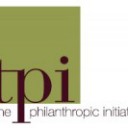Given all the opportunities donors have to move themselves to a higher level of strategic thinking and giving, why do some donors never get there or get stuck, particularly at the ‘getting it’ stage? Why do some potential trigger points – such as generational transition or finding a passion – fail to result in strategic giving?
Clearly there is the absence or inverse of the many different contributing factors identified in my previous posts. A sense of overwhelm, lack of time, complacency, discomfort with wealth, isolation from social issues or lack of inspiring role models are some of the critical barriers to strategic giving. Frustration matching one’s ambitions with what is doable (given limited time or money) can also be a factor. Some donors TPI has encountered are stopped by the fear that their philanthropy will actually do more harm than good. In this post – the final one in my series on strategic philanthropy – I highlight several other major hurdles that donors, who may not seem to realize their potential to become more strategic, often face.
Challenging family dynamics – This is the most frequently encountered obstacle to a family giving enterprise’s ability to become strategic. Many of the other promoting factors might be present, but if the family dynamics are challenging, the foundation may be unable to focus on impact and strategy. Typical dynamics issues include unhealthy sibling rivalry, overbearing and controlling parents, a family branch division, and inability to manage conflict and communicate openly. When any of these are present, it becomes difficult for the family to develop a sense of family enterprise and purpose, and personal agendas tend to dominate.
When family dynamics issues crop up after family foundations have practised strategic giving, it may be possible to continue their good practice, particularly if they have strong and credible program staff and long-term grantee relationships, and if they develop mechanisms and processes for managing family conflict. However, we also see some family foundations ‘backslide’ during these crises, as they attempt to mollify unhappy family members.
Isolation and privacy concerns – Some donors are very uncomfortable exposing themselves to the world as ‘philanthropists’ for fear of becoming a target for requests, altering their peers’ perceptions of them, security concerns, etc. As a result, they may surround themselves with advisors, staff or anonymous giving vehicles that serve as a buffer between them and the organizations and issues they want to impact. Privacy concerns may also keep donors from making site visits or becoming personally involved with organizations. This distance is a barrier to becoming engaged in philanthropy, becoming a learner and ultimately a strategic giver.
Some donors are even more isolated and may get no advice or interaction with grantees, peers or advisors who could help them better realize their potential. Most family foundations have family-only boards or have one outside board member who is a paid advisor with little knowledge of the philanthropy field. This isolation limits the ability of the family to think big or do something different than what they have always done.
Arrogance and cynicism – Whether derived from personality and/or life experience, donors who are cynical about the philanthropic sector, or arrogant about their abilities – and thus do not connect with other donors or grantee organizations in a mutual learning partnership – are severely limited in their ability to be strategic and effective. These donors are not inclined to be learners. When part of a family giving enterprise, they threaten to derail the strategic development process, unless their giving is sequestered. While giving does not require a Pollyanna personality, we believe that enthusiasm and idealism are important supplements to strategic thinking.
Inadequate/imbalanced information – Despite myriad resources available and the information overload so many of us experience, many donors do not have access to the kinds of information that would promote more strategic thinking and action. Donors complain to us that they are frustrated by the absence of information about impact and results – and this limits their philanthropy. Moreover, while the large cultural, health and educational institutions have become increasingly sophisticated in their information delivery, most donors know very little about small, grassroots organizations – who they are and how to judge their effectiveness. A related concern is that the donor conversation is often dominated by development staff at these large institutions who (1) may encourage edifice giving and discourage strategic giving; (2) take up the majority of the donor’s philanthropic dollars, and (3) focus more on donor relations, instead of donor education.
Reluctance to invest in the philanthropy process – Many donors are reluctant to spend money, by paying for staff or consultants, to make their philanthropy more effective. For some, it may feel wrong or immoral to divert funds away from their philanthropy, and they may be skeptical that such investment will increase their philanthropic impact. For others, they only find satisfaction and meaning from philanthropy when they have a personal, hands-on engagement in the giving. While the latter is quite laudable, it can also be unrealistic when the donor has inadequate time and/or skills, and the scale of their philanthropic funds is significant.
What other obstacles have you, as a donor or advisor, faced in moving towards more strategic giving?
Ellen Remmer is CEO and president of The Philanthropic Initiative





Comments (1)
Hello! We a really loved your article, and we wrote a response to it from the Arab American perspective. We'd love feedback! http://bit.ly/givingbarriers